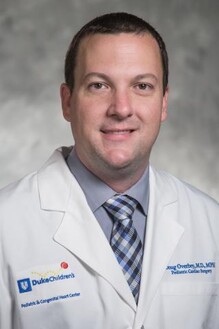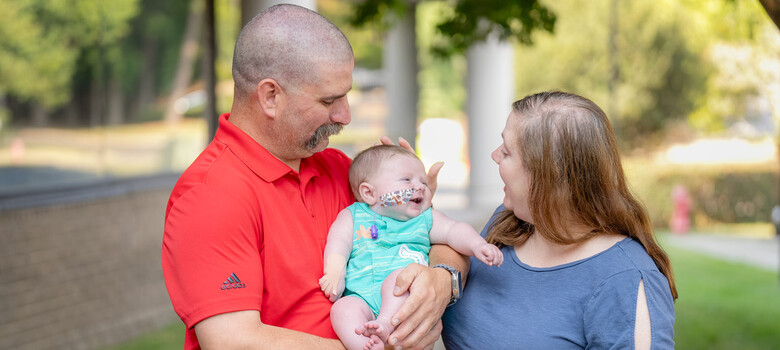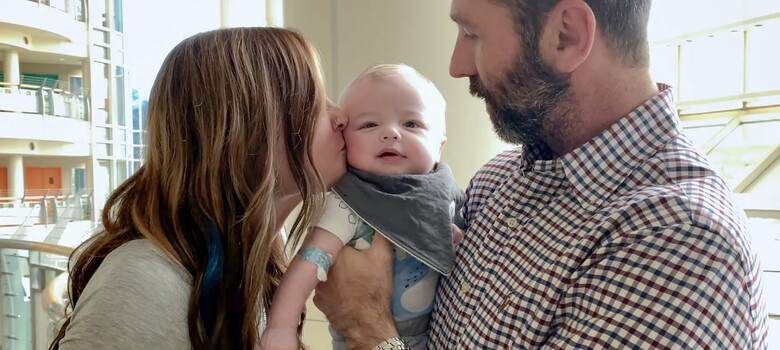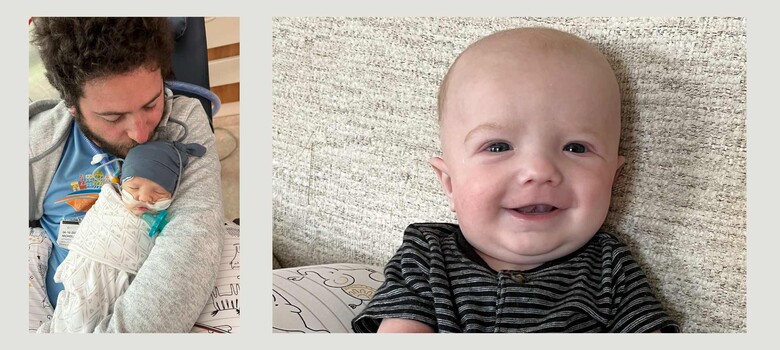Back to School Weeks After Minimally Invasive Surgery for Atrial Septal Defect
Duke Offers Advanced Minimally Invasive Options

Giselle cuddles with the puppy she got after having heart surgery. The dog's name is Corazón, the Spanish word for "heart."
Giselle Olivas was 8 years old when she was diagnosed with an atrial septal defect, also known as a hole in the heart. Her parents chose Duke for her surgery. But instead of traditional open-heart surgery, Giselle and her family opted for a less invasive approach. After her procedure in summer 2024, Giselle returned home following a two-night hospital stay. She attended her first day of fourth grade a few weeks later. “Everything looked great at her most recent appointment,” Giselle’s father Carlos Olivas said. “And the best part is that we shouldn't have to worry about this again in the future.”
Heart Murmur Leads to Heart Defect Discovery
Giselle Olivas’ parents, Carlos and Guadalupe Olivas, were shocked to learn their daughter had been living with a congenital heart defect her entire life. She didn’t have any symptoms except for tiring easily sometimes. During a routine school physical in October 2023, Giselle’s doctor heard a heart murmur -- a whooshing sound that indicates abnormal blood flow through the heart. “They instantly suspected something was wrong,” Carlos Olivas said.
An echocardiogram (an ultrasound of the heart) showed Giselle had a hole in the wall between her left and right atria (the upper chambers of the heart). The large hole was about the size of a half dollar and allowed oxygenated and unoxygenated blood to mix. Without treatment, the hole could cause pulmonary hypertension, heart failure, and other serious problems later in life.
Choosing Duke for Pediatric Heart Surgery
Winston-Salem residents Carlos and Guadalupe Olivas chose Duke for their daughter’s care because “I saw that Duke was rated number one in North Carolina, and number two in the United States,” Carlos Olivas said. "Why would I choose somewhere else when I can choose number one?"
After undergoing testing at Duke Children's Specialty Services of Greensboro, Giselle and her parents met Duke pediatric heart surgeon Douglas Overbey, MD, via a video visit. “It was a lot easier than having to drive all the way to Durham,” Carlos Olivas said. “Every question we asked, Dr. Overbey took the time to answer.”
A Menu of Minimally Invasive Options
Dr. Overbey laid out several surgical options for Giselle. First was a robotic approach that would require Giselle to wait a year or so to have surgery. Second was traditional open-heart surgery, also known as a sternotomy. This method provides great access to the heart but requires a large incision and breaking the breastbone. The recovery is long, painful, and the procedure creates a sizable scar.
The final option was a partial sternotomy, also called the subxiphoid approach. Compared to a full sternotomy, the incision is much smaller and lower on the chest. “We’re able to leave the breastbone intact, only opening up the lowest part of it,” Dr. Overbey said. “This surgery isn't offered at a lot of places because you need to have experience with it, and you need to have the right tools in the operating room.”
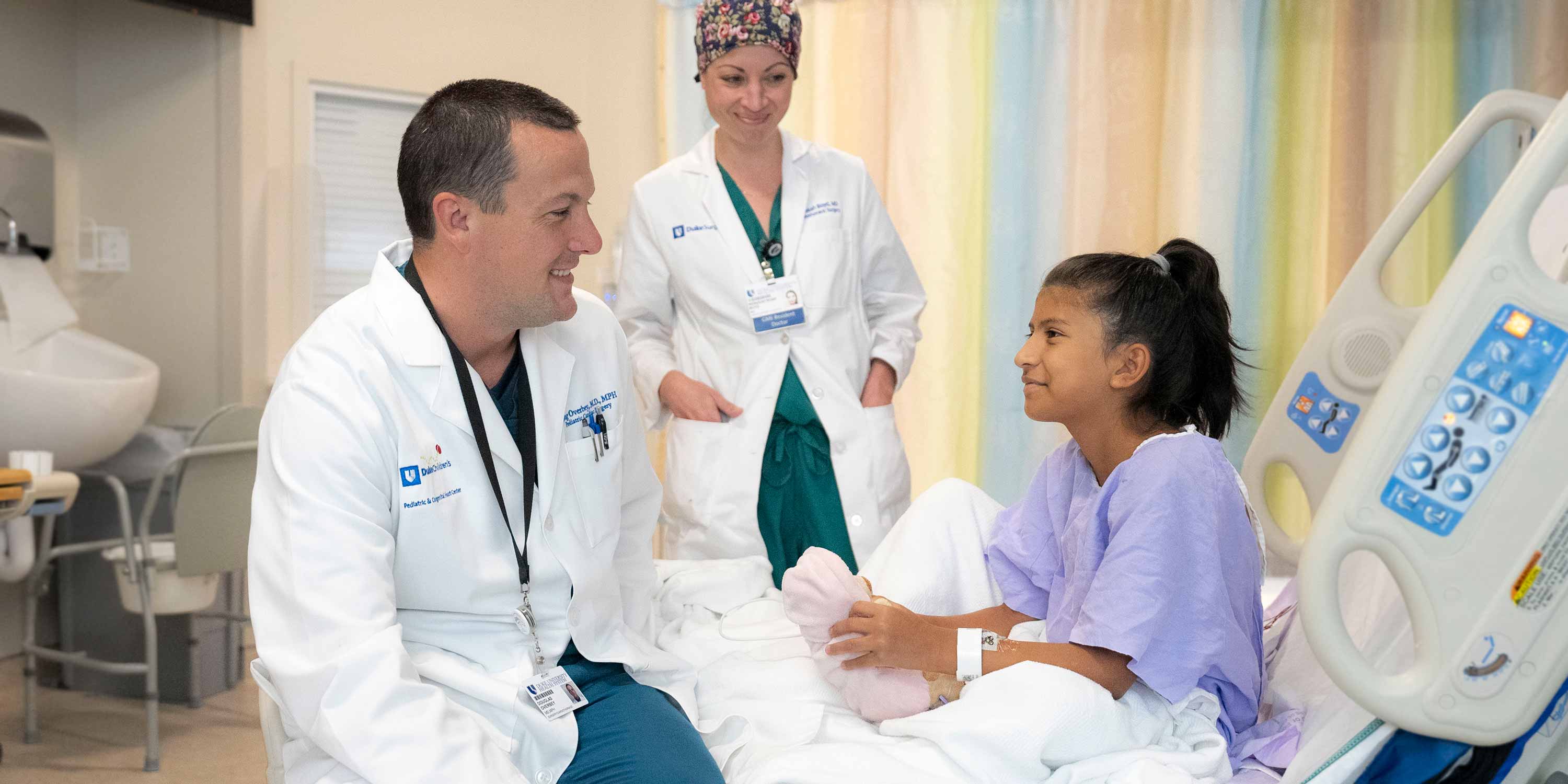
Recovering in Time for School to Start
Ultimately, the Olivas family opted for the less-invasive partial sternotomy. On July 22, 2024, Giselle underwent surgery at Duke Children's Hospital & Health Center. Two days later, “she was walking to the car to go home,” Carlos Olivas said. By the following week, Giselle was shopping for a new bookbag with her parents and brothers. And by mid-August, she was ready for her first day of school.
“We offer our patients as minimally invasive an experience as we safely can,” Dr. Overbey said. “This subxiphoid option does take a little extra time because it’s more difficult for us to do procedurally. But the cosmetic result and the reduced time to discharge, that's more than worth it.”
